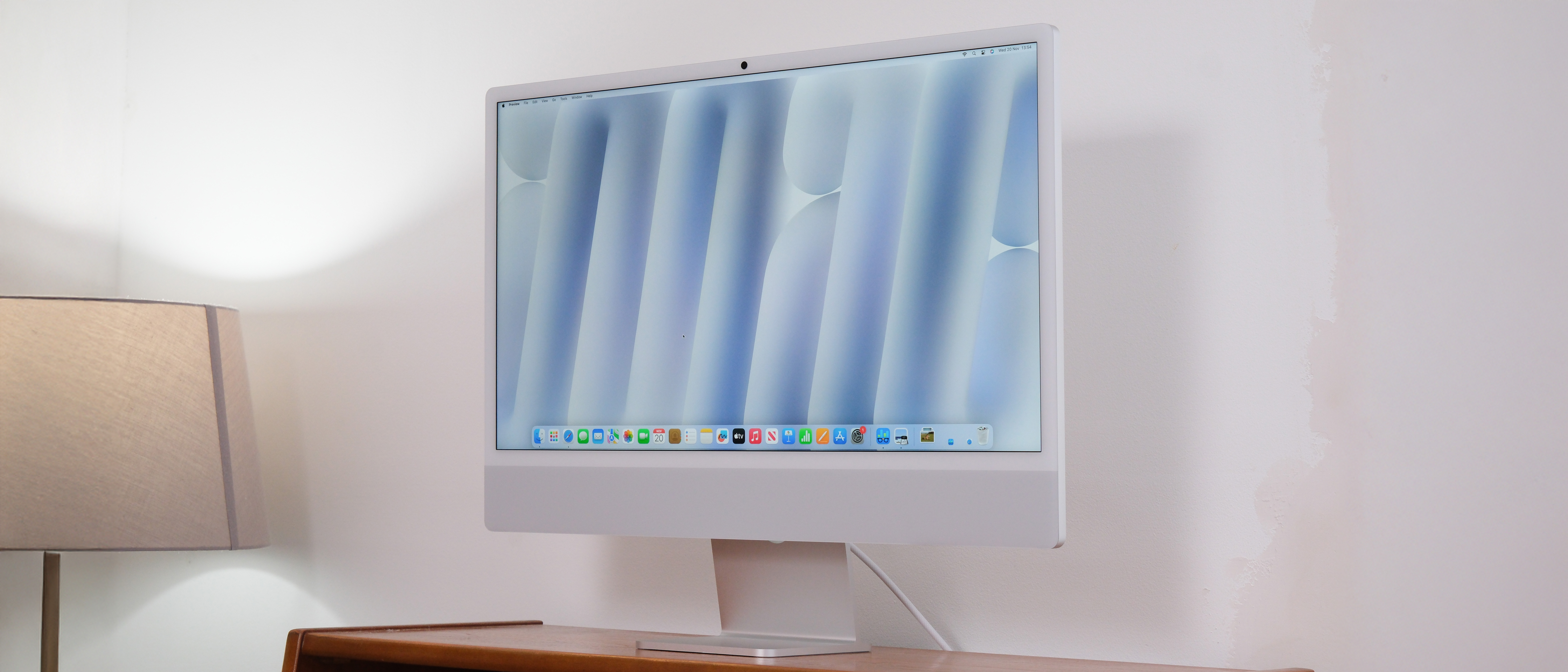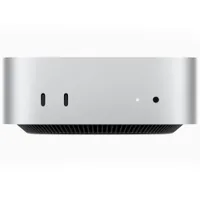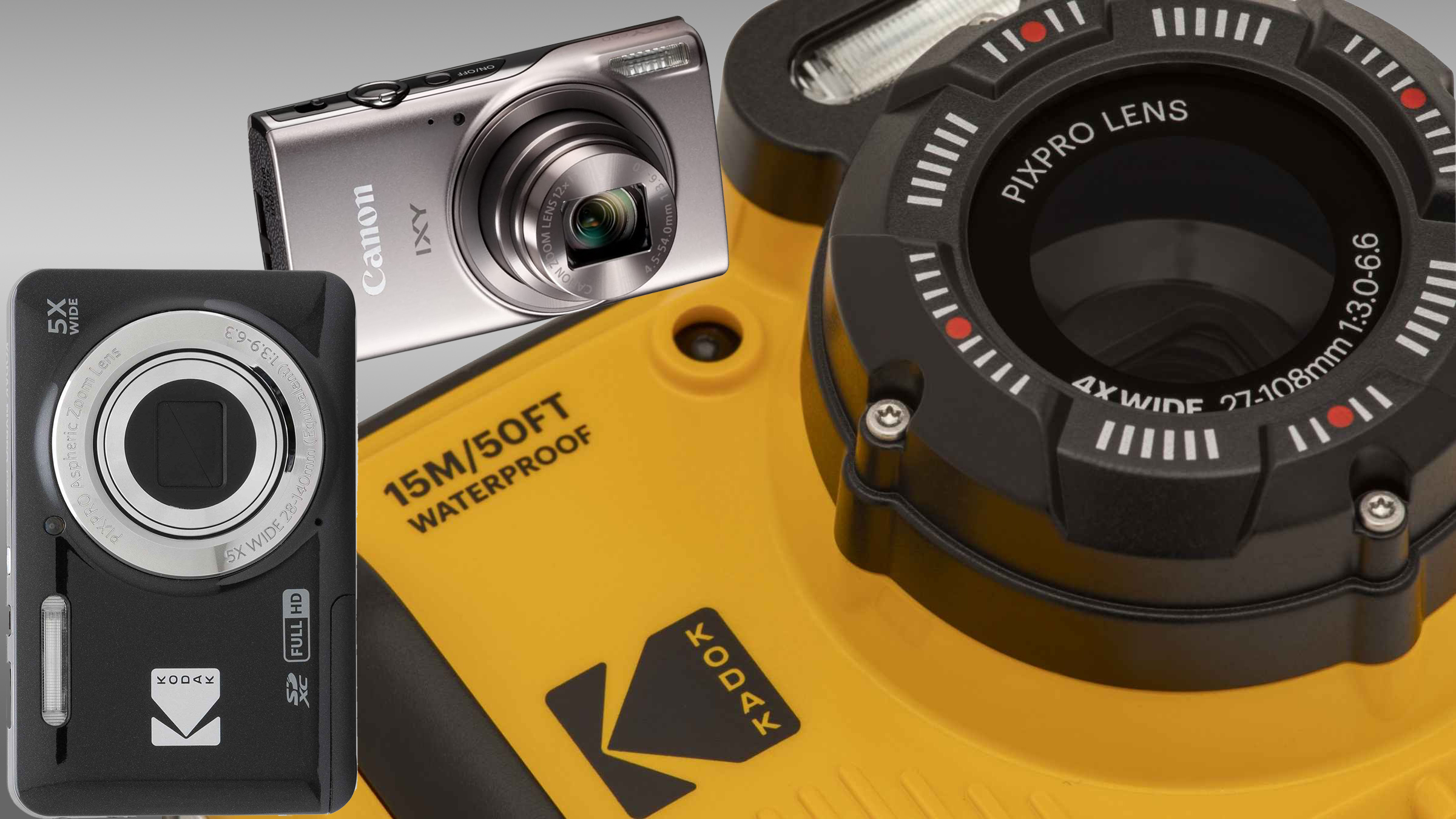Digital Camera World Verdict
With the latest and greatest processor, the 2024 version of the Apple iMac is unsurprisingly the best since the M1 redesign. However, the limited flexibility in the stand and the lack of upgradability make it hard to reconcile going for this over something a little more modular like the new Mac Mini and a monitor. But for aesthetic minimalism, then the iMac can’t be beat.
Pros
- +
Beautiful all-in-one design
- +
Fun colors
- +
Powerful processing
- +
Great screen
Cons
- -
Can’t upgrade down the line
- -
Stand positions are limiting
- -
Still waiting on promised Apple Intelligence
Why you can trust Digital Camera World
Another year another round of Apple processor upgrades, and it’s the turn of one of Apple’s most iconic products – the iMac – to get the M4 treatment. The iMac has had a bit of an unusual run in the update cycle. After the iMac was boldly redesigned for the M1 chip, it was then skipped over for the M2 update, before being upgraded to the M3 last year – and many expected the same pattern to repeat. However, the quintessential desktop computer was included in Apple’s big October event this year alongside the MacBook Pro and Mac Mini to get the latest in-house Apple silicon.
Like in previous generations, there are still two different versions of the iMac with the base model being held back by limited ports and configutation options – I still think it's a confusing move from Apple, but the specs below might clear things up a little.
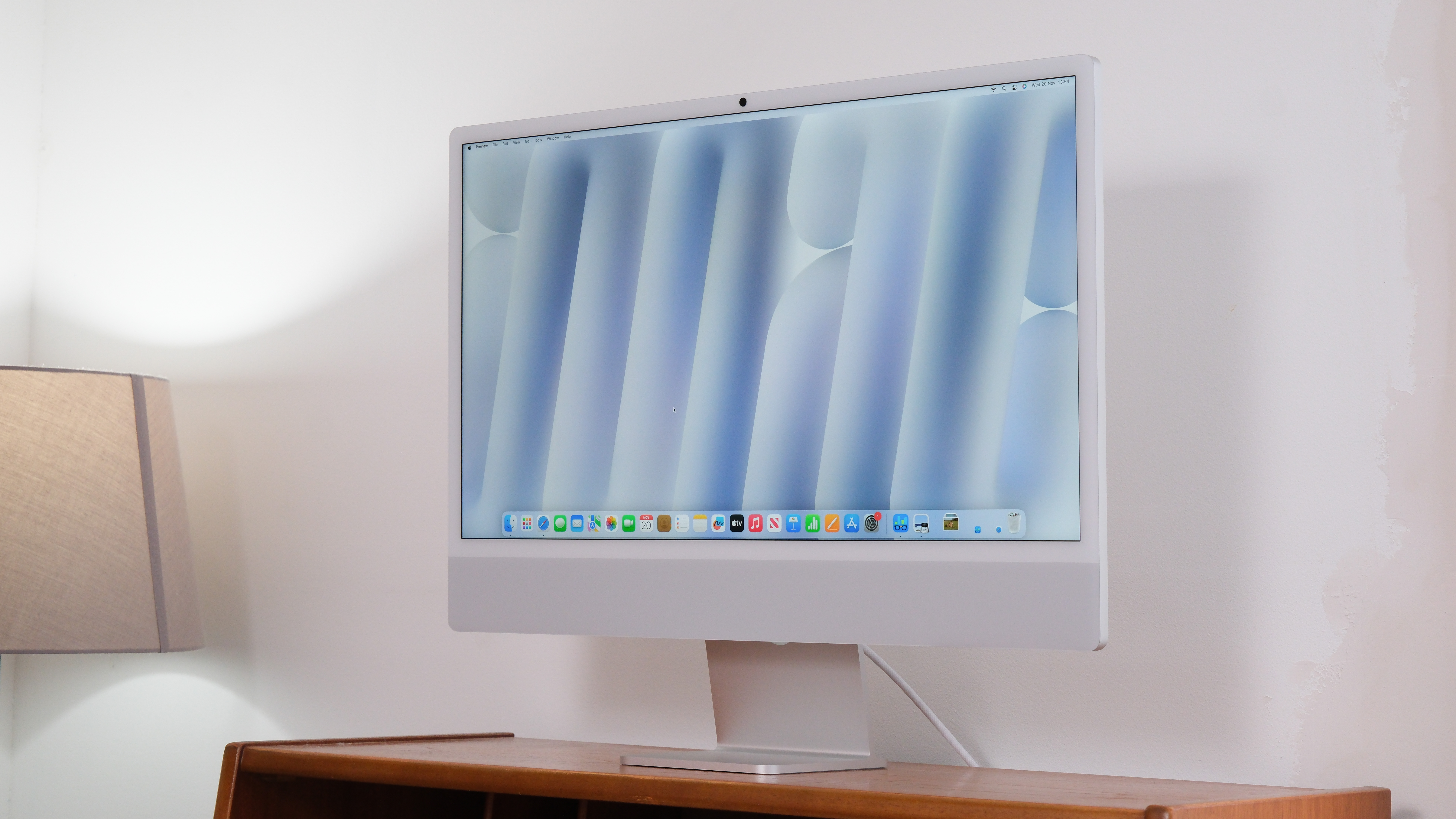
Apple iMac M4: Specifications
| Row 0 - Cell 0 | iMac M4 (Base) | iMac M4 |
| CPU | Apple M4 (8-core CPU, 8-core GPU, and 16-core Neural Engine) | Apple M4 (10-core CPU, 10-core GPU, and 16-core Neural Engine) |
| RAM | 16GB (configurable up to 24GB) | 16GB (configurable up to 32GB) |
| Screen | 24-inch, 4.5K Retina display, 4480 x 2520, 218 ppi, 500 nits | 24-inch, 4.5K Retina display, 4480 x 2520, 218 ppi, 500 nits. Configurable with Nano-Texture Glass |
| Storage | 256GB (configurable up to 1TB) | 256GB (configurable up to 2TB) |
| Ports | Two Thunderbolt 4 USB-C, headphone jack | Four Thunderbolt 4 USB-C, headphone jack |
| Wireless | WiFi 6E 802.11ax, Bluetooth 5.3 | WiFi 6E 802.11ax, Bluetooth 5.3 |
| Camera | 12MP, 1080p | 12MP, 1080p |
| Weight | 4.42 kg / 9.74 lbs | 4.44 kg / 9.79 lbs |
| Dimensions | 54.7 x 46.1 x 14.7cm / 21.5 x 18.1 x 5.8 inches | 54.7 x 46.1 x 14.7cm / 21.5 x 18.1 x 5.8 inches |
Apple iMac M4: Price
For what you get, the iMac isn’t hugely expensive, with prices starting at $1,299 for an 8-core CPU, 8-core GPU, 16GB RAM, and a 256GB SSD – although for this price you for some reason miss out on two Thunderbolt ports, an ethernet port and Touch ID on the keyboard which just feels stingy. To get both of these things, plus an upgrade to a 10-core CPU/GPU will cost $1,499 – which is the only version of the iMac I would actually recommend considering.
iMacs aren't upgradable once they leave the factory, so if you want to future-proof yourself as much as possible – a fully specced out iMac, still with a 10-core CPU/GPU, but with nano-textured glass, 32GB of RAM, and 2TB SSD will cost $2,899.
This would all be fine, if Apple didn’t also release the smaller-than-ever Mac Mini, which can be configured to a much higher spec, including an M4 Pro chip, all for comparatively less money. And while you still need to buy a screen, you can choose from one of the hundreds of available Apple or non-Apple options and you have the freedom to upgrade your system in a more modular fashion.
Apple iMac M4: Design & Handling
The iMac is probably the most beautiful aesthetically minimal computer money can buy. Coming in several colors, as well as a more demure grey/white, it can fit in amongst almost any decor while making your desk setup look ready for a spread in a design mag.
On the outside, not much has changed in the design of the iMac this year, with Apple sticking doggedly to the big redesign that launched alongside the M1 chip. For those holding out for the return of the 27-inch iMac, this isn't it.
The best camera deals, reviews, product advice, and unmissable photography news, direct to your inbox!
The screen is the same 24 inches, and the resolution is the same 4.5K with 500 nits of brightness. There are two screen coating options though, Apple will sell you a model with the standard screen coating, or the newer fancy nano-textured glass coating which reduces reflections, kind of like a matte display, but also not. But it is very effective, although I think it's limiting for use inside unless you have quite glare-y overhead lights. However, the nano-texture glass will add an additional $200 to the price of the unit, and isn't available as an upgrade to the base model.
While I personally think 24 inches is slightly too small for a monitor, I can’t argue with the quality of Apple’s display. The screen is sharp, bright, and colorful, with a nicely balanced contrast. I did really enjoy using it, especially to edit photos on, where I was just confident that my colors were how they should be seen. You can’t control the screens others use, but there is some comfort in knowing that this screen will perfectly match the look of your images at least on iPhones, iPads, and MacBooks.
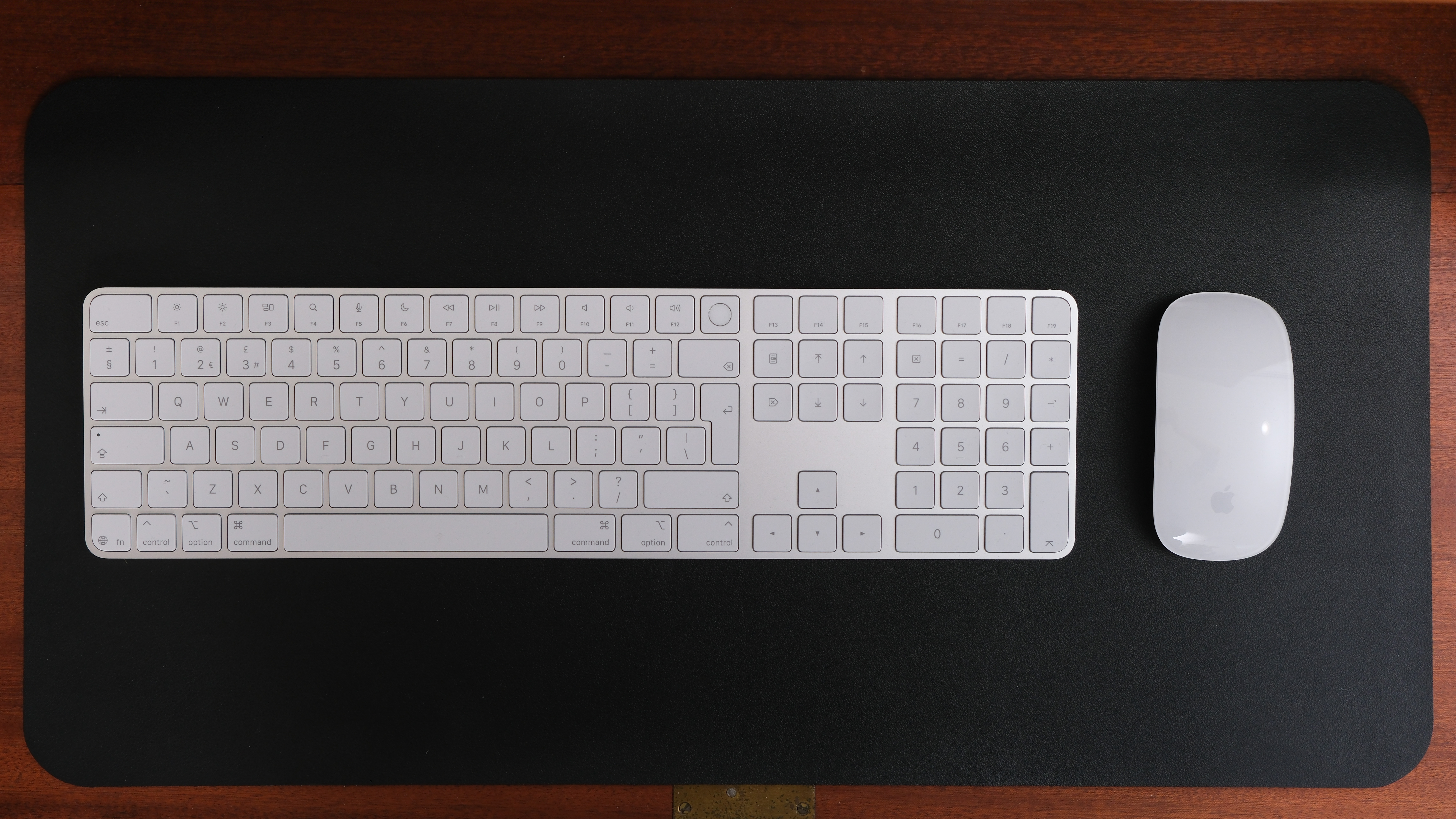
My biggest gripe with the iMac is the stand that Apple includes – as beautiful and minimal as it is, I find it far too limiting. The stand lets you tilt the screen back and forth by around 45º, although that’s it. There is no height adjustment and no way to spin the screen into a portrait orientation – admittedly maybe niche pursuits for coders or editors, but these are features even some of the cheapest non-Apple monitors offer. You can however buy a VESA adapter for the iMac from Apple, which will let you mount the screen on a different stand or an articulating arm.

Around back, there are either two or four ThunderBolt 4 USB-C connections depending on the model you pick – sorry anyone still rocking USB-A accessories, but you’ll have to find a dongle. I think that two on the base model is no where near enough, and again this feels like a classic Apple move of subtley trying to nudge you into going for a higher spec model with a couple of annoying shortcomings – at least the base model has 16GB RAM this year.
Also not really the iMac's fault, but these ports might quickly ruin your minimal aesthetic if you need to leave accessories with trailing wires plugged in. I pretty much always have a portable SSD connected to my computers, which I can sweep the wire away through the cable tidy in the stand, the SSD still just sits awkwardly at the base of the stand.
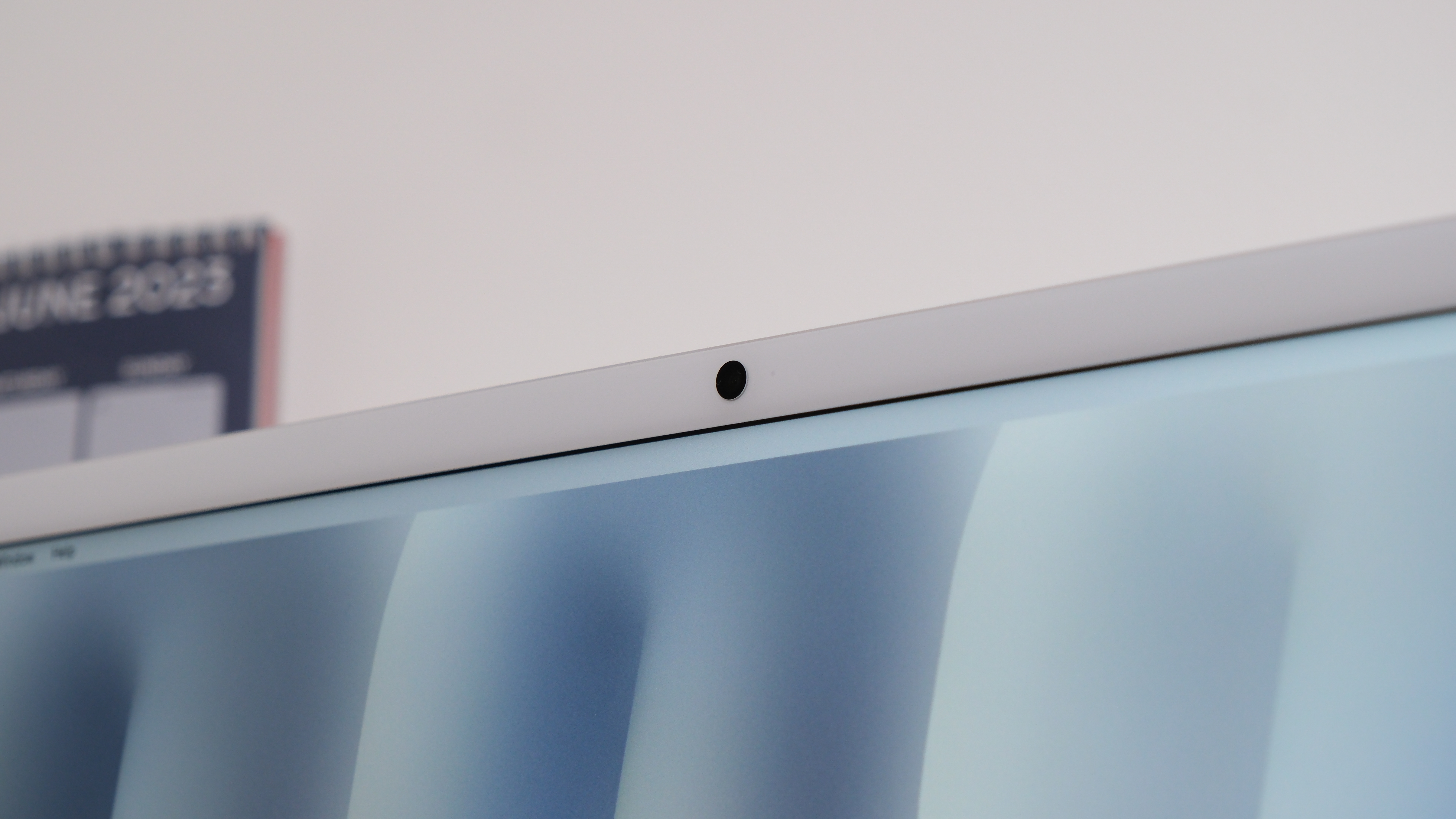
The iMac has a six-speaker system that supports spacial audio, and Dolby Atmos – and the speakers sound really good, but didn’t blow me away. The speakers are perfectly capable when it comes to listening to music and watching a movie, but I got a much richer and bolder sound from the Google Nest Audios that sat beside the iMac on my desk. For casual listeners, this is totally fine, but for audiophiles, there are limits to what you can squeeze into an 11.5mm frame.
The iMac also has a 12MP camera, with center stage to keep you framed in the middle as you move around (although this is limited to apps that actually support it). The webcam allows you to record and stream in 1080p, which is fine, I don’t think my colleagues need to see me in the morning in 4K. There are also three studio-quality mics for video calling, audio recording, dictation, and chatting to Siri which I found super clear, although there wasn’t much background noise to cut through alone in my office.
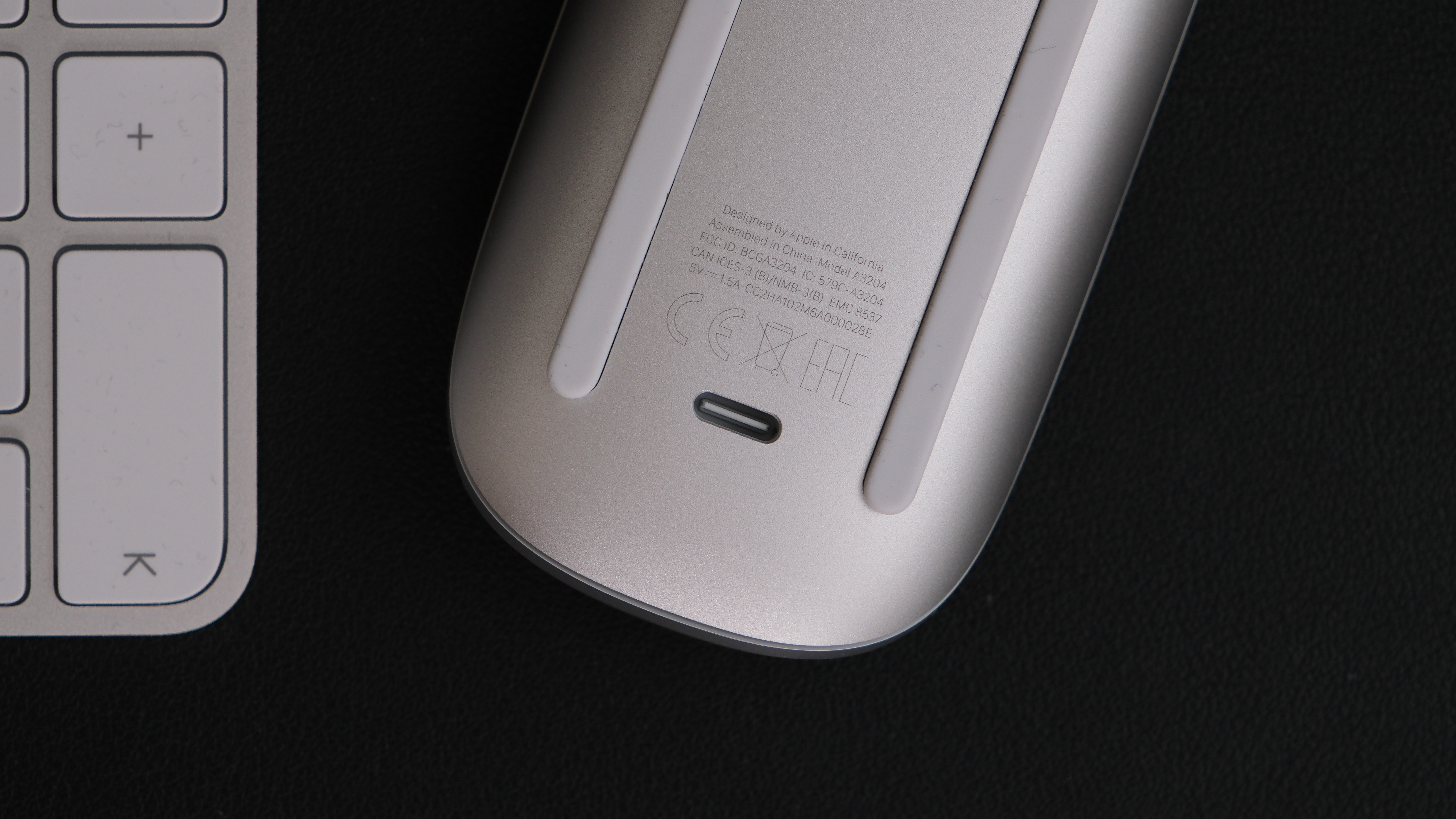
Thanks to the included mouse and keyboard being wireless, there are no trailing wires from the iMac across your desk. Both the keyboard and mouse also take on hints of color to match the color of the iMac you choose which is a lovely touch and keeps the whole package looking for cohensive. Both keyboard and mouse have also been moved over to USB-C instead of the outdated Lightning connection for charging, which should make life much simpler – except for the fact that the charging port is still on the bottom of the mouse, which prevents it from being charger and used at the same time. Come on Apple!
The keyboard is a classic Apple shallow one, which I quite like typing on, but others might prefer the big capped keys of a mechanical model. The Apple Mouse is also divisive, I don’t love it or hate it, but I think I prefer a physically tactile scroll wheel rather than the touch-sensitive one on the Apple Mouse. You can also buy an Apple Magixc Trackpad if you prefer.
One minor frustration is you cannot remove the keyboard and mouse when buying the iMac and save money. I already own an Apple Keyboard and Apple Mouse which I am happy with, and many others might be upgrading from older M1 or M2 iMacs. For a company that claims to put a lot of thought into its environmental impact, this seems like an area that could use a little more thought.
Apple iMac M4: Performance
Apple has continued to deliver time after time on performance improvements with its in-house silicon. The M4 chip is Apple’s fastest yet – although don’t get overly excited if you already have an M1 to M3 equipped Apple computer as the speed increases are becoming increasingly marginal between generations, and I think you’d struggle to notice them day-to-day. However, against older Intel machines, there is a much more dramatic difference.
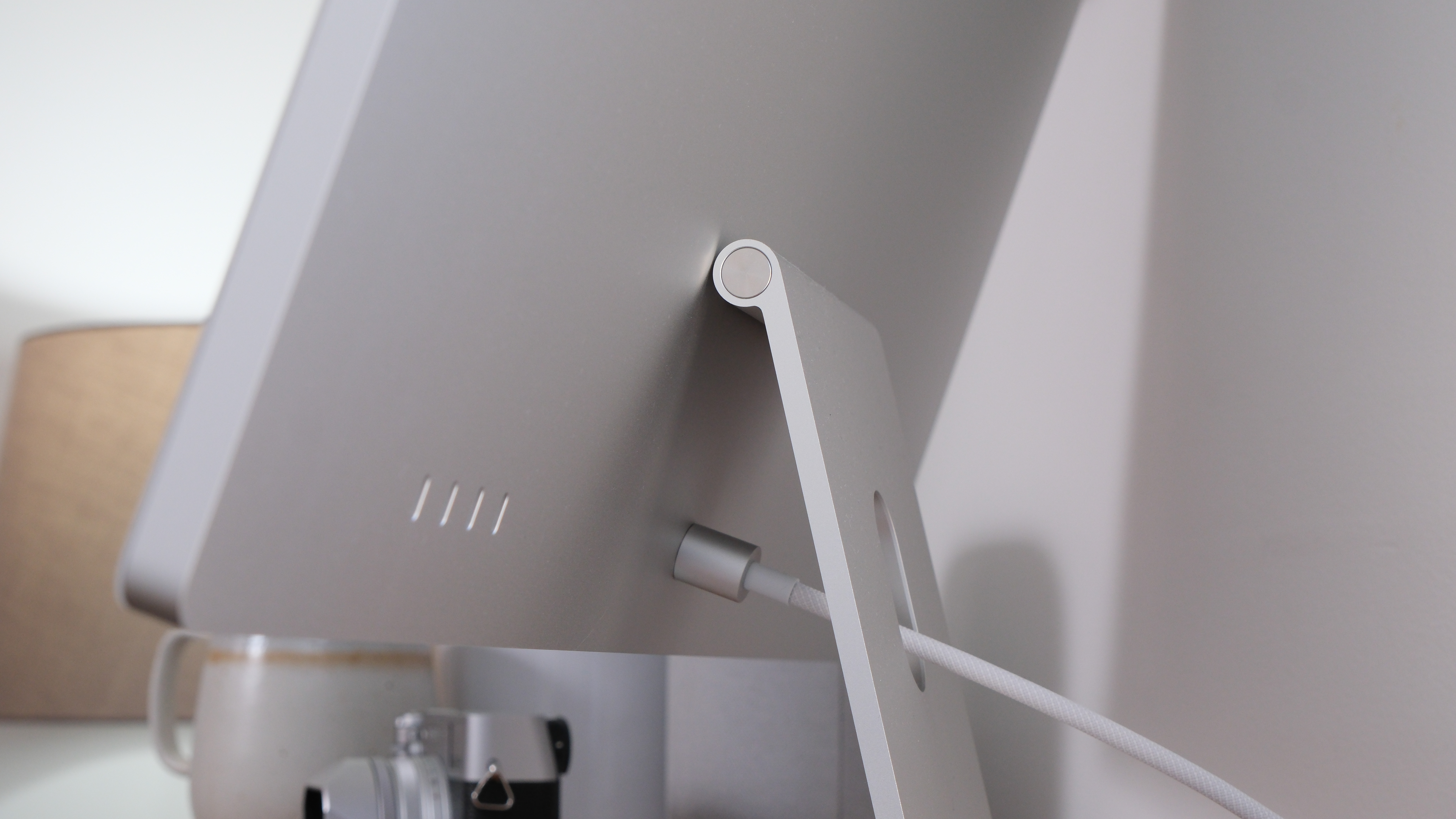
From the off, everyday tasks are just so much faster. A simple thing like opening software takes nearly no time at all. Photoshop which would sometimes take up to a minute to open and load a large image on my older Intel i7 MacBook takes seconds now on the M4. Pulling photos into Lightroom and building previews is also a job that used to send my laptop nearly into a full meltdown, but again is quicker and less resource-intensive on M4.
But the iMac also handles tougher jobs too. I have been editing a lot of 4K videos with a high bitrate for a project in Adobe Premiere. Where I am used to my playback window stuttering as it struggles to render the edited video on older devices, this is now smooth. If you are editing a lot of 6K or 8K streams then you probably want to look at a Mac Mini with M4 Pro, or Mac Studio, but for most creators, the M4 will do the job.
Below you can see the benchmarks from the iMac M4 versus some of Apple’s older chips in previous generations of iMac.
| Header Cell - Column 0 | iMac M4 | iMac M3 | iMac M1 |
|---|---|---|---|
| GeekBench 6 Single-core CPU | 3,809 | 3,170 | 1,744 |
| GeekBench 6 Multi-core CPU | 14,786 | 11,991 | 7,661 |
| GeekBench 6 OpenCL | 36,056 | 30,472 | Row 2 - Cell 3 |
One area I am going to pull up Apple though is with its heavy marketing around the iMac of Apple Intelligence. Here in the UK, we are not due to get Apple Intelligence until next year, and even then, there is still some question of if and what Apple Intelligence will be able to do. It’s great that the iMac will support upcoming AI features, but I am not convinced by selling products now based on future updates.
Apple iMac M4: Verdict
The M4 iMac remains the sleekest designed desktop on the market, despite an unchanged design, it's still an enviable thing to have on your desk – especially complemented by vibrant new color options.
Internally, the introduction of the M4 chip provides a noticeable performance boost over any older Intel model, although gains on recent models aren't as substantial. The iMac easily handles multitasking and demanding tasks like photo editing and light video editing with aplom though. Features such as the updated 12MP Center Stage webcam and optional nano-texture glass on the display also add some new catnip for upgraders.
However, the iMac isn't without shortcomings. The limited upgradability is an issue, the days of upgradeable components in desktops seem long in the rearview mirror. I also find the stand frustratingly limited and wish there was more height adjustment and rotation. Despite a USB-C update, the Magic Mouse's charging port still remains on the bottom, sort it out Apple.
Ultimately, the iMac M4 is an excellent choice for users seeking a stylish, powerful, and all-in-one desktop – but only if you definitely don't want to consider the cheaper and more powerful Mac Mini.
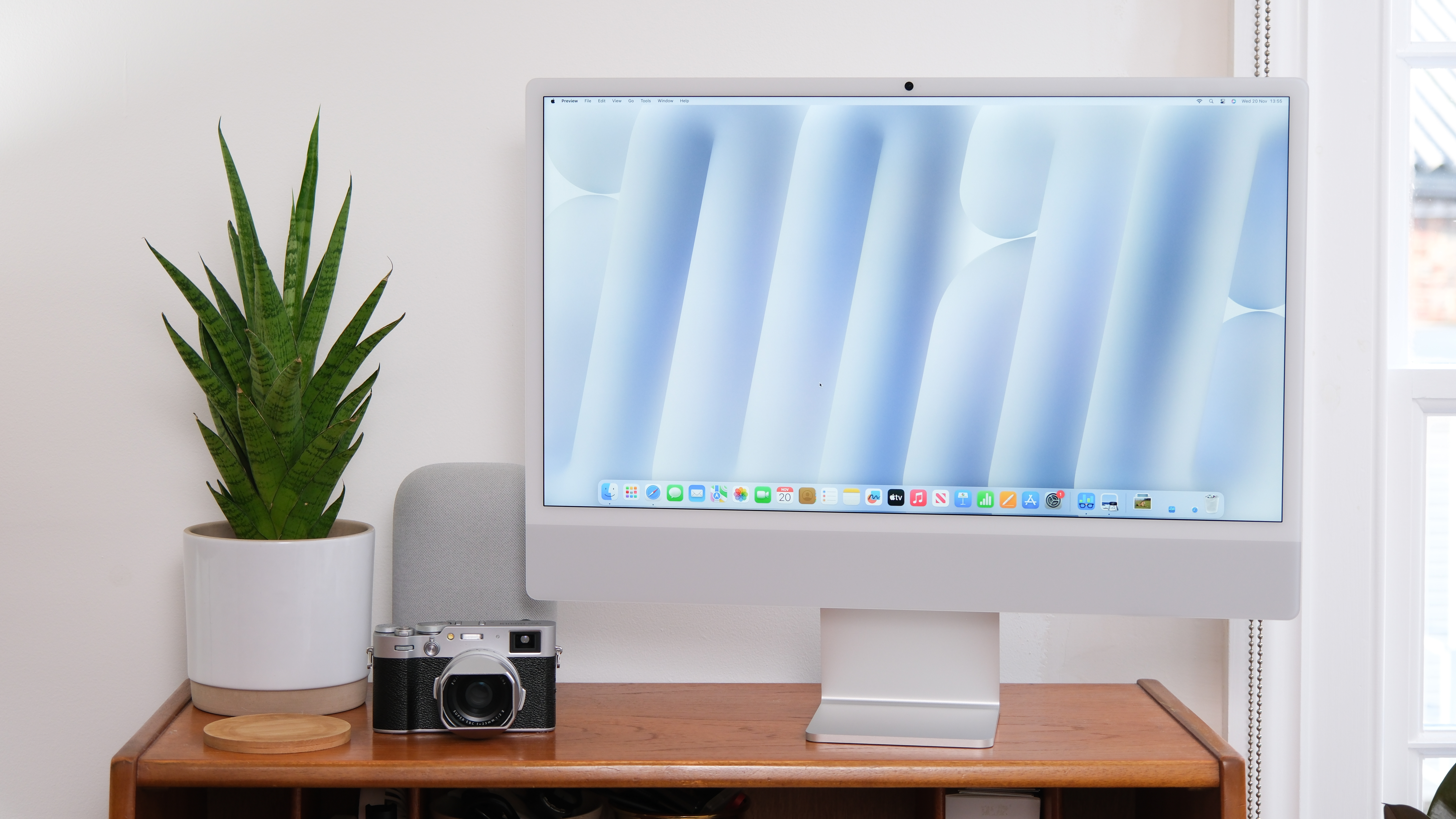
| Features | Simple all-in-one design with included mouse and keyboard. No option for updating components though. | ★★★★☆ |
| Design | Stunning design and outstanding screen, but I wish the stand had more flexibility. | ★★★★☆ |
| Performance | Powerful new M4 chip speeds though day-to-day computing, as well as photo editing and light video work. | ★★★★★ |
| Value | Cheapest option confusingly misses out on the Touch ID. You might save more with a higher-spec Mac Mini and a monitor. | ★★★★☆ |
Alternatives
Apple Mac Mini: Now smaller than ever before the Mac Mini takes up even less of your desk, and for the design conscious, it also looks pretty damn good. You can also configure a Mac Mini with higher specs including a M4 Pro chip for a surprisingly little amount of money. Read the full review...
Apple MacBook Air: Okay why am I recommending this to someone looking for a desktop computer? Well for around the same price as the iMac, you can plug the Air into a monitor and boom – desktop computer. And when you're done, you can pick it up and use the same computer on your commute. Read the full review...

Gareth is a photographer based in London, working as a freelance photographer and videographer for the past several years, having the privilege to shoot for some household names. With work focusing on fashion, portrait and lifestyle content creation, he has developed a range of skills covering everything from editorial shoots to social media videos. Outside of work, he has a personal passion for travel and nature photography, with a devotion to sustainability and environmental causes.
